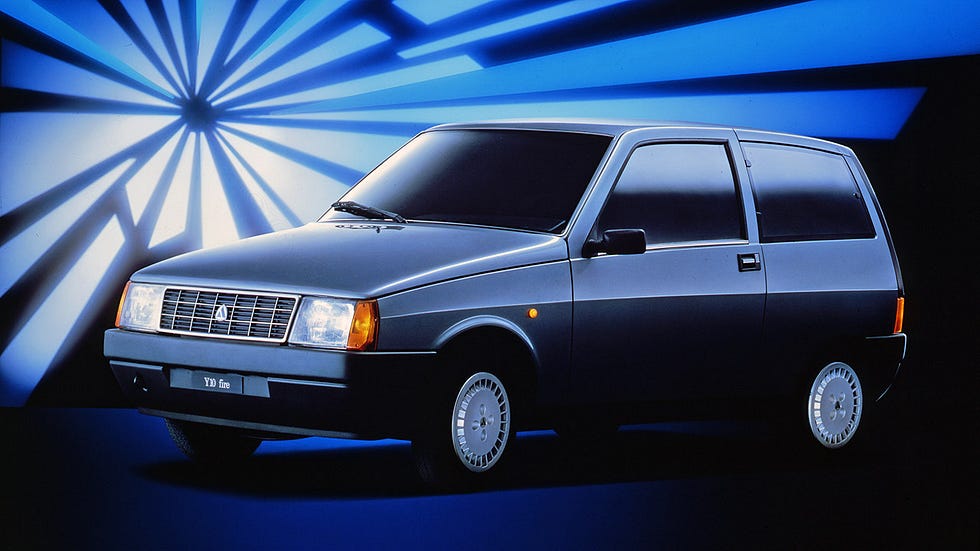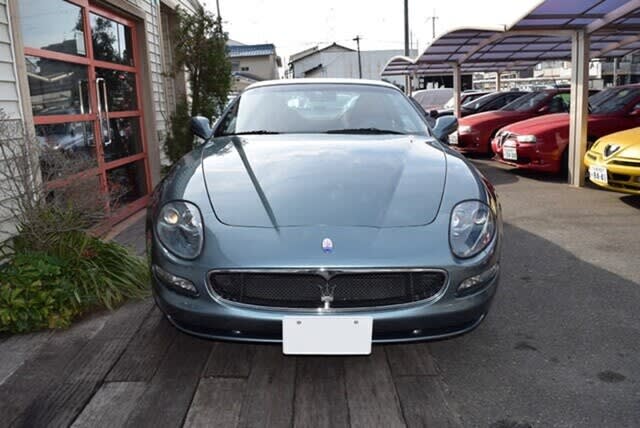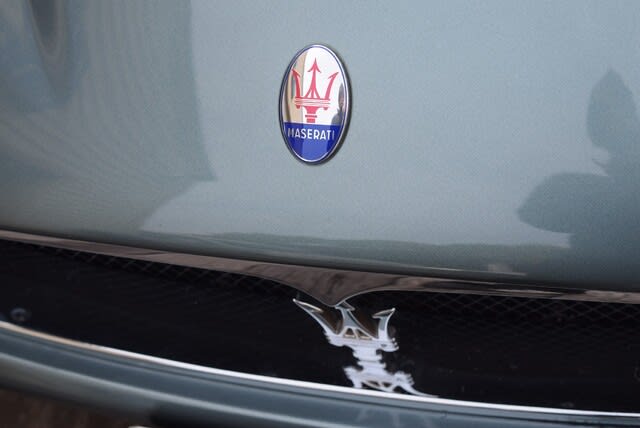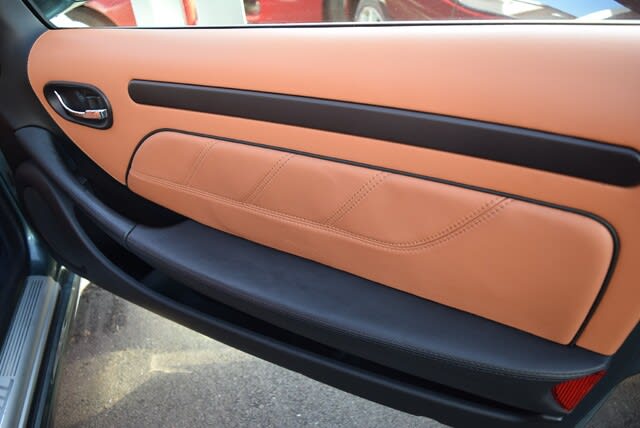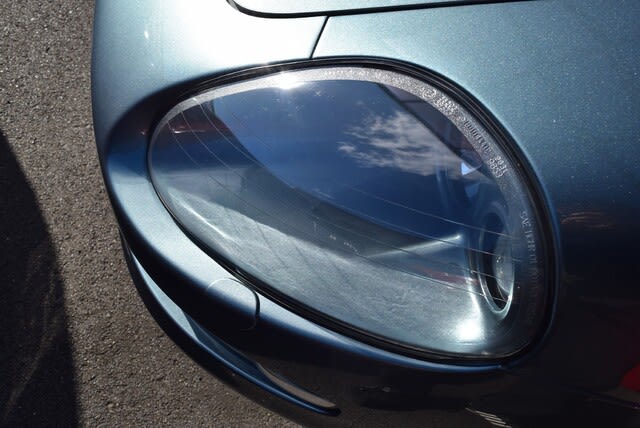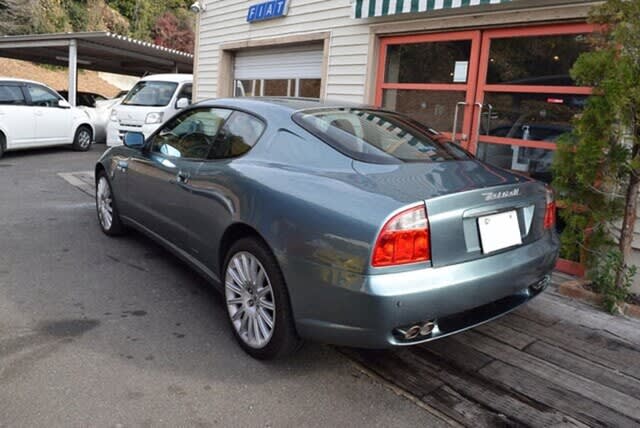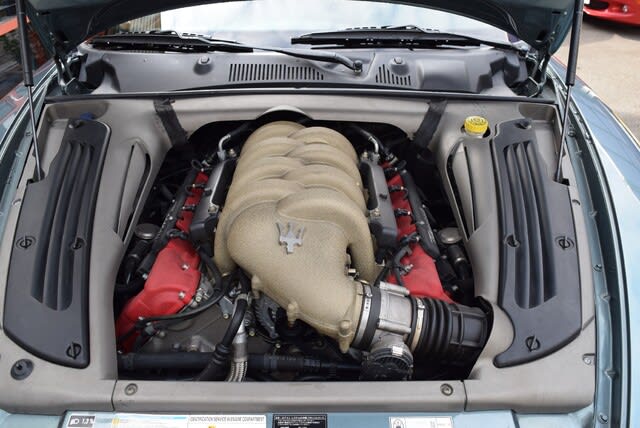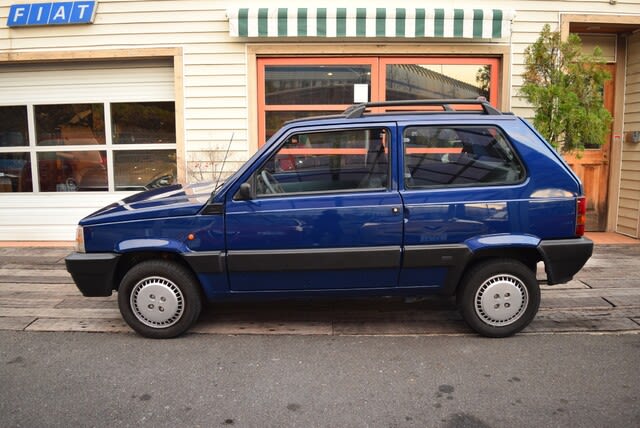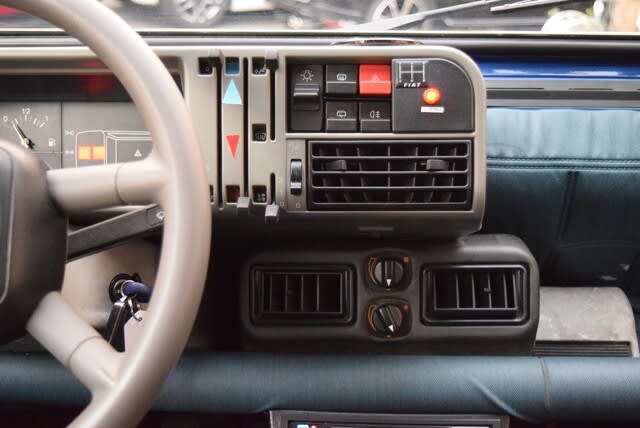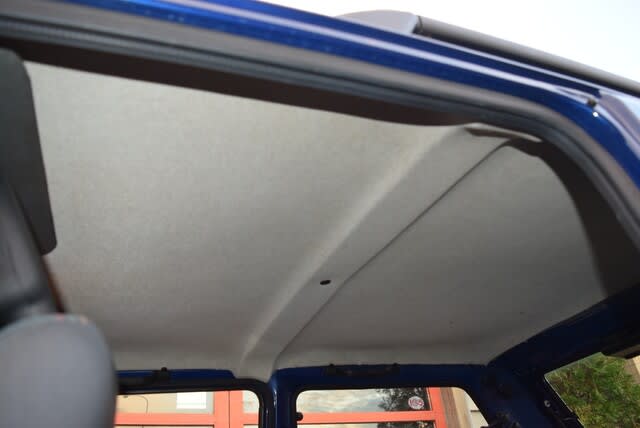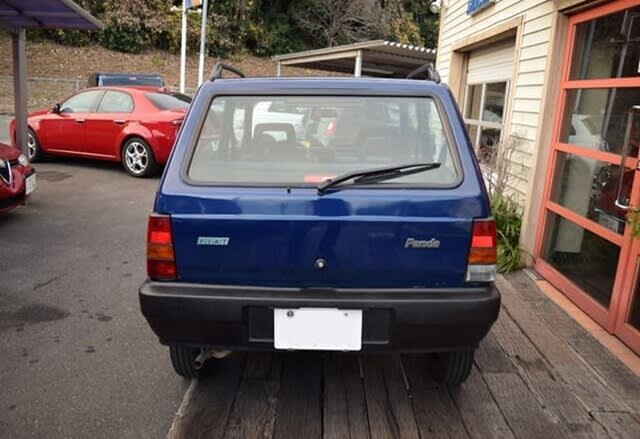Autobianchi: The Story Of The Most Important Italian Automaker You’ve Never Heard Of
アウトビアンキ。イタリアで最も重要な自動車メーカーの物語。
Unless you’re an Italian over the age of 40, you’re unlikely to have ever heard about the Autobianchi brand. Although it may be easy to dismiss it as a footnote, the Milanese firm’s role in automobile history is actually far from inconsequential… And here’s why.
40歳以上のイタリア人でない限り、アウトビアンキというブランドについて聞いたことがない人はいないでしょう。しかし、ミラノにあるこの会社の自動車史における役割は、決して軽微なものではありません。
The Y10 from 1985 (picture from media.stellantis.com)
1985年のY10(画像はmedia.stellantis.comより)
From Bianchi to Autobianchi
Few people know that the Italian brand Bianchi, mainly associated with high-end racing bicycles, also built automobiles, and began doing so as early as 1900.
By the late 1930s, Bianchi had established itself as a purveyor of classy mid-sized cars and sturdy diesel trucks that competed more-or-less directly with Lancia’s products on the Italian market.
However, the end of WWII left Bianchi as nothing more than a smoldering heap of ruins, much like the rest of Italy’s industrial fabric.
While production of bicycles and trucks resumed quickly to cater to the demands of post-war reconstruction, Bianchi’s attempts to re-enter the automobile market never went beyond a few prototypes, and a deal was struck in January of 1955 with Fiat and Pirelli that saw Bianchi’s trucks division merge into a new entity called Autobianchi.
The new company’s mission was to build in Bianchi’s facility located in Desio, near Milan, a small two-seater car based upon the floorpan and running gear of the Fiat 500, which was then in the final stages of development.
ビアンキからオートビアンキへ
高級レーシングバイクのイメージが強いイタリアのブランド、ビアンキが自動車も製造していたことはあまり知られていない。
1930年代後半には、高級中型車や頑丈なディーゼルトラックを生産し、イタリア市場でランチアとほぼ互角の勝負をするまでになった。
しかし、第二次世界大戦が終わると、ビアンキはイタリアの他の工業地帯と同じように、くすぶった廃墟と化してしまった。
自転車やトラックの生産は戦後復興のために急ピッチで再開されたが、自動車市場への再参入はいくつかのプロトタイプにとどまり、1955年1月、フィアットとピレリとの間で、ビアンキのトラック部門を統合してアウトビアンキという新会社を設立する契約が結ばれた。
新会社のミッションは、ミラノ近郊のデシオにあるビアンキの工場で、当時開発の最終段階にあったフィアット500のフロアパンとランニングギアをベースにした小型2シーターカーを作ることだった。
The impossibly cute Bianchina
The Autobianchi Bianchina was presented at Milan’s science and technology museum in September 1957 and was, in a way, the polar opposite of the Fiat 500 it was based on.
ありえないほどキュートなビアンキナ
1957年9月、ミラノの科学技術博物館で発表されたアウトビアンキ・ビアンキナは、ある意味、ベースとなったフィアット500の対極にある車であった。
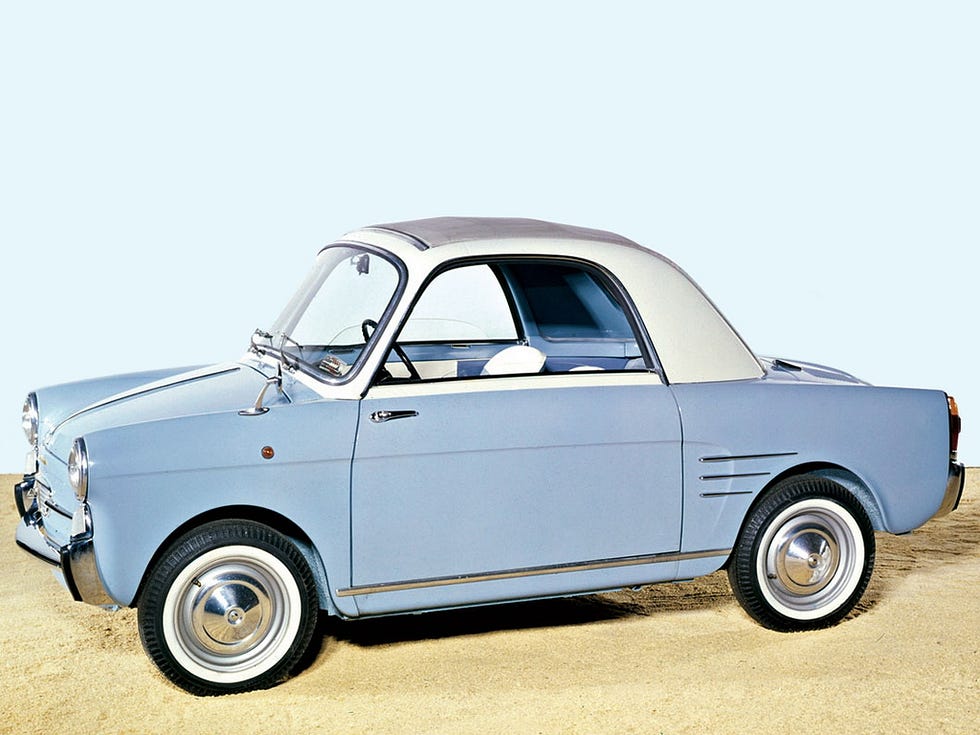
The Autobianchi Bianchina (picture from Wheelsage.org)
アウトビアンキ ビアンキナ(画像はWheelsage.orgより)
Whereas the small Fiat’s body design was guided by the need to optimize weight and costs, the Bianchina was instead deliberately frivolous, sporting all of the styling tropes typical of the period: tailfins, abundant chrome decorations, two-tone paint, and whitewall tires.
The buying public quickly embraced the Bianchina, so much so that it initially outsold the Fiat 500 itself, despite the higher retail price.
Bianchi’s worsening financial situation saw it divesting its stake in Autobianchi by 1958 already, while 1960 saw the launch of an even cuter, and nowadays highly sought-after, Bianchina cabriolet.
小型フィアットのボディデザインが重量とコストの最適化を目指したのに対し、ビアンキナはテールフィン、豊富なクローム装飾、ツートーンペイント、ホワイトウォールタイヤなど、この時代の典型的なスタイリングを意図的に軽薄にした。
しかし、このビアンキナは、販売価格が高いにもかかわらず、当初はフィアット500の販売台数を上回るほどの人気を博した。
しかし、ビアンキの経営状態は悪化し、1958年にはアウトビアンキの株式を売却してしまう。一方、1960年には、さらに可愛らしく、現在では高い人気を誇るビアンキナ・カブリオレを発表する。
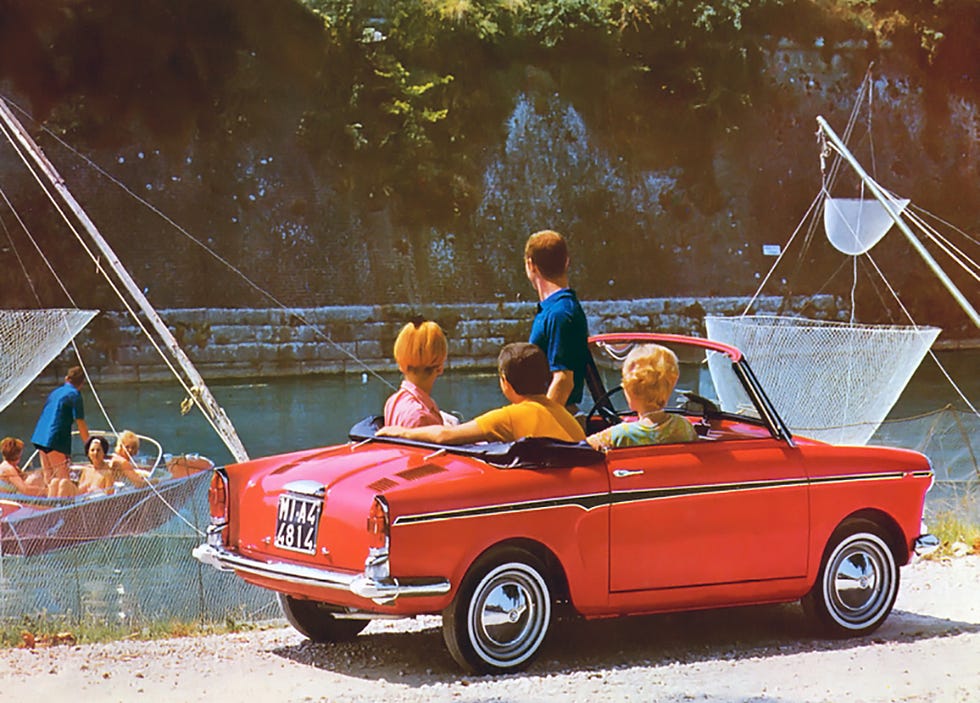
The Autobianchi Bianchina (picture from Wheelsage.org)
アウトビアンキ ビアンキナ(画像はWheelsage.orgより)
The original two-seater model was then superseded in 1962 by the Bianchina “quattro posti,” a four-seater sedan that, together with its wagon and van derivatives, remained on sale until 1969 and remains the most common Bianchina variant on the classic car market.
1962年に2シーターモデルから4シーターセダンのビアンキナ "クワトロポスティ "が登場し、ワゴンやバンの派生モデルとともに1969年まで販売され、クラシックカー市場で最も多く見られるビアンキナである。
The Italian experiment
By September of 1967, the remaining partner Pirelli sold off its stake in Autobianchi, which became a wholly owned Fiat subsidiary. Production of the Fiat 500’s wagon variant, known as the “Giardiniera,” was relocated to Autobianchi’s facilities, and the model was marketed as an Autobianchi from 1968 until its discontinuation in 1977.
During the 1960s, Fiat still enjoyed almost complete control of the Italian car market, and the role of Autobianchi often became that of the firm’s “guinea pig” to test more advanced technical solutions and vehicle concepts on the market under another name.
One such experiment was the Autobianchi Stellina, introduced in 1963 and the first fiberglass-bodied car to enter series production in Italy.
イタリアの実験
1967年9月までに、残りのパートナーであるピレリはアウトビアンキの株式を売却し、フィアットの100%子会社となった。フィアット500のワゴンモデル「ジャルディニエラ」の生産はアウトビアンキの施設に移され、1968年から1977年に廃止されるまで、このモデルはアウトビアンキとして販売された。
1960年代、フィアットはイタリアの自動車市場をほぼ完全に掌握しており、アウトビアンキの役割は、より高度な技術的ソリューションや車両コンセプトを別の名前で市場に投入するための「モルモット」であることが多かった。
1963年、イタリアで初めてグラスファイバー製のボディを採用した「ステリーナ」もそのひとつである。
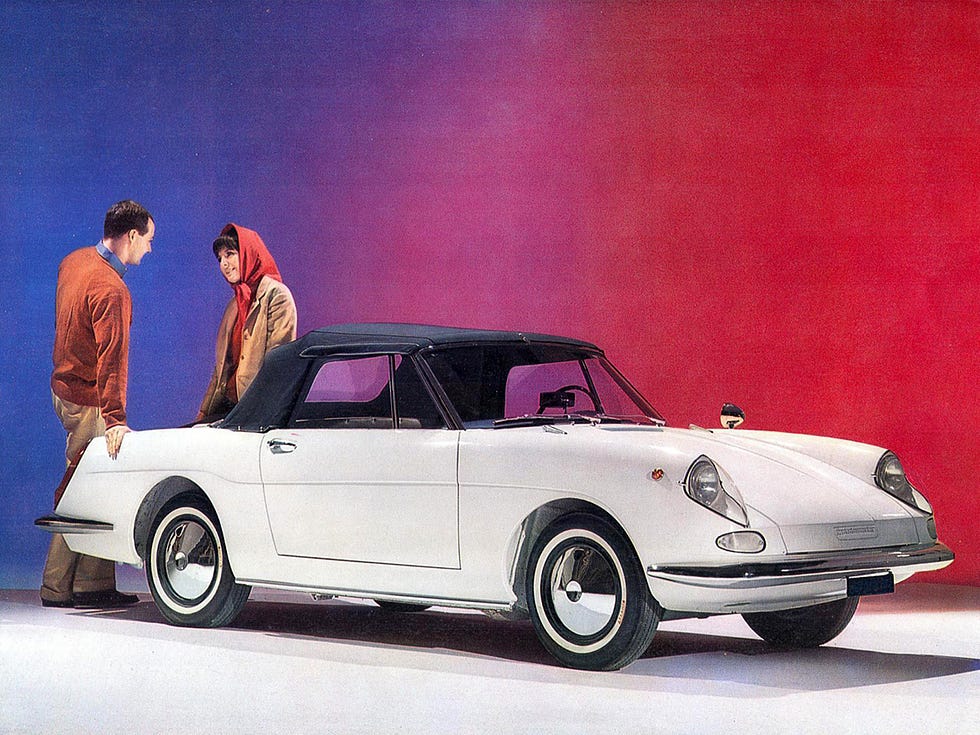
The Autobianchi Stellina (picture from Wheelsage.org)
アウトビアンキ・ステリーナ(画像はWheelsage.orgより引用)
Under the unstressed plastic panels, though, the Stellina hid a sturdy steel unibody that made it no lighter than a Fiat 600 and about as prone to rust. Performance wasn’t outstanding either, given the engine and running gear of the Stellina were carried over, practically unchanged, from the Fiat 600.
By 1965, the arrival of the faster and sexier-looking Fiat 850 Spider transformed the Autobianchi Stellina from a hard sell into an impossible one, and production was quickly terminated.
しかし、ステリナには頑丈なスチール製ユニボディが採用され、フィアット600と同じように軽く、錆びやすい。エンジンも走行装置もフィアット600からほぼそのまま受け継いでいるため、性能もそれほど優れてはいなかった。
1965年、より速く、よりセクシーなフィアット850スパイダーが登場すると、オートビアンキ・ステリーナを売ることは不可能になり、生産はすぐに打ち切られた。
Rewriting the rules
But if the Stellina came and went without leaving much of a trace, the Autobianchi Primula of 1964 changed motoring history forever.
ルールの書き換え
しかし、ステリーナが跡形もなく消えていったとしたら、1964年のアウトビアンキ・プリムラは、モータースポーツの歴史を永遠に変えてしまった。
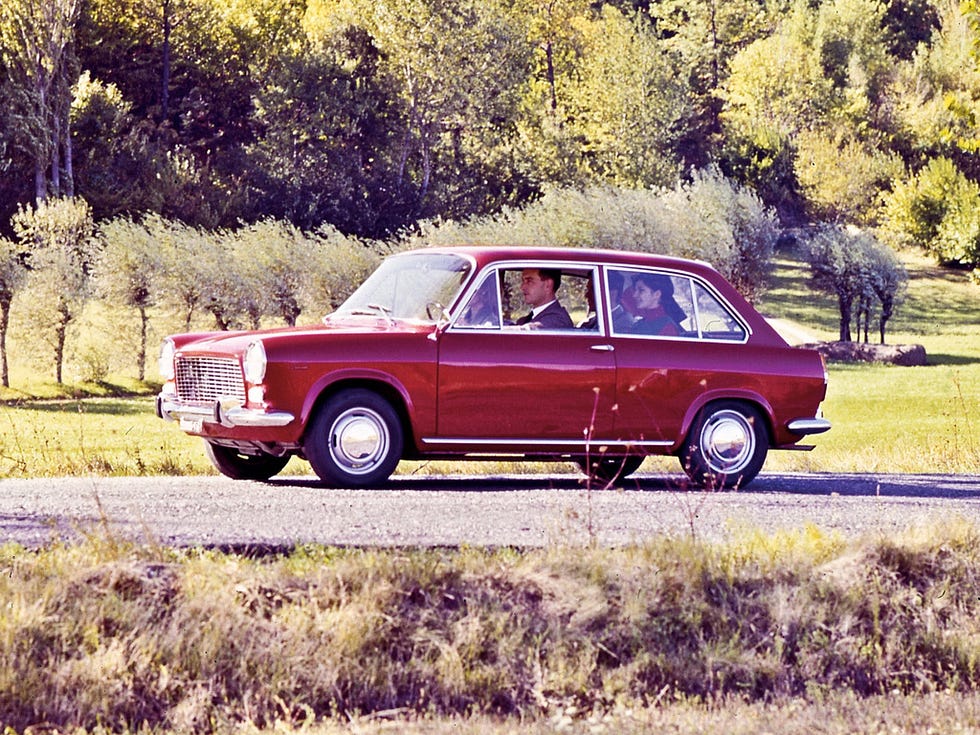
The Autobianchi Primula (picture from Wheelsage.org)
アウトビアンキ・プリムラ(画像はWheelsage.orgより引用)
The launch of the Mini in 1959 made waves in the European automobile industry and, as Fiat’s engineering supremo Dante Giacosa wrote in his memoir, caused in him some regret for not having insisted on the studies for a car with front-wheel drive and transverse engine he did over a decade earlier.
No longer wanting to be held back by the ingrained skepticism regarding front-wheel-drive of Fiat’s upper management, Giacosa cleverly involved Nello Vallecchi, then head of Autobianchi.
Manufactured in lower volume and under the Milanese brand, the eventual failure of Giacosa’s daring front-drive compact car project would not compromise Fiat’s reputation and bottom line and could therefore be greenlighted.
Just like Alec Issigonis, Giacosa had to adapt an existing engine but, crucially, placed the gearbox beside it rather than in the engine’s sump, where it was on the Mini.
1959年に発表されたミニは、ヨーロッパの自動車業界を騒然とさせ、フィアットの技術最高責任者ダンテ・ジャコーザは、10年以上前に行った前輪駆動・横置きエンジンの研究にこだわらなかったことを後悔したと回顧録に記している。
フィアット上層部の前輪駆動に対する懐疑的な考え方に引きずられることなく、ジャコーザは、当時アウトビアンキのトップだったネロ・ヴァレッキを巧みに巻き込んだ。
ミラノブランドで少量生産することで、ジャコーザの大胆なフロントドライブコンパクトカーのプロジェクトが失敗しても、フィアットの評判や利益を損なうことはなく、グリーンライトになることができた。
アレック・イシゴニスと同じように、ジャコーザは既存のエンジンを流用しなければならなかったが、重要なのは、ギアボックスをミニのようにエンジンのサンプの中ではなく、エンジンの横に配置することだった。
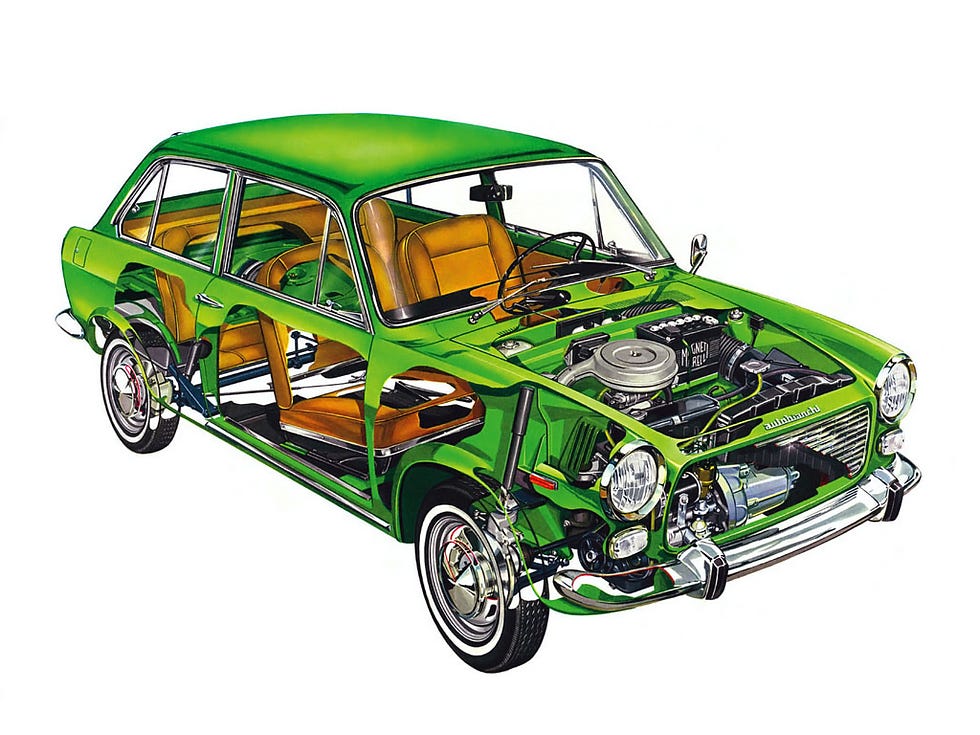
The Autobianchi Primula (picture from Wheelsage.org)
アウトビアンキ・プリムラ(画像はWheelsage.orgより引用)
This solution, made possible by the Primula’s track being around 100 mm wider than the Mini, kept the engine and gearbox lubrication separate and allowed the two items to be manufactured and tested independently.
Autobianchi built around 75.000 Primulas between 1964 and 1970, and roughly half of them were exported, France being the market where the Primula found most appreciation.
The Primula’s technical layout was then embraced not only by Fiat itself but by nearly every successful compact car introduced from the mid-70s onwards.
プリムラのトラック幅はミニより100mmほど広く、エンジンとギアボックスの潤滑を分離し、2つのアイテムを独立して製造・テストすることが可能だったため、このソリューションが実現した。
オートビアンキ社は1964年から1970年にかけて約75,000台のプリムラを生産し、その約半数は輸出された。
プリムラの技術的レイアウトは、フィアットだけでなく、70年代半ば以降に登場した成功したコンパクトカーのほとんどに採用された。
出典:https://medium.com/roadster-life/autobianchi-the-story-of-the-most-important-italian-automaker-youve-never-heard-of-98b43129c04b










